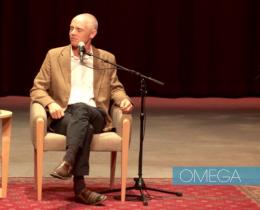Your mind is like a TV or radio with lots of stations playing all at once. Many of us are tuned in to the Thinking Channel all day long, and most of these programs are talk shows. We don’t realize that there is a tuner that will allow us to change the channel. However, when we learn to use local awareness, then talk shows of the Thinking Channel no longer need to be our regularly scheduled programs. There are other dimensions of mind and identity that are always available and can be accessed with local awareness.
There is an initial relief of being able to tune away from the Thinking Channel, but if we don’t know what to tune into next, we may land on Negative Mood Music Channel or the Unconscious Nightmare Station. Others might subscribe to the Too Serious Satellite Channel or You’re No Good FM, or the Fear and Worry News Network. In fact, we might become identified with one voice in our heads and take this single, small bandwidth to be who we are. This loud I-AM radio station is preset to override the other bandwidths of our lives.
You might be seeing old episodes from your early life playing in your mind’s eye; whether these are soap operas or horror shows, you’re likely seeing them from the point of view of a character inside the story, rather than that of an outside viewer. It’s easy to get involved with chase scenes, revenge plotlines, or romantic tragedies if you don’t know that they’re only recordings being played over and over again. We think these regularly scheduled programs are the place to look for solutions to our dissatisfaction with our lives, so we channel surf through them constantly. But reruns, reality shows, or game shows offering cash and prizes are the wrong place to find satisfaction.
We can shift out of being located in ego-identification, which is looking through our eyes as if the world is virtual reality or reality TV. Fortunately, with local awareness we can learn to intentionally tune away from chattering bandwidths and tune in to the silent music of the awake awareness that is always in the background. When we shift into awake awareness and awake awareness is embodied, we are in real contact with the world and ourselves.
Mind, the Gap: An Exercise
Mind, the Gap, is about finding awake awareness in the gap between thoughts. You may know a meditation practice where you repeat a word or a sacred phrase, known as a mantra. Here, you will focus not on the word or its meaning, but on the space—and awareness—between words. The intention is to give the thinking mind the simple task of repeating a word to occupy it while you become aware of the gap between your thoughts. As you explore the presence of awareness in space, you may begin to notice that the space between and around the words is the same continuous field of awareness that you are aware from.
1. Begin by silently and slowly repeating in your mind, “Blah,” with some space in between. “Blah…blah…blah.” Allow the word “blah” to float through the space of your mind like a feather. Don’t create any other thoughts or be interested in any thoughts that arise. Let “blah” occupy all the interest and activity of thinking.
2. Begin to be aware of the thought-free space between the words, “blah”…space…“blah.”
3. Next, become more interested in the quality of the space between the words. See if you notice that the space is not just a gap, but that the space itself is aware. “Blah"…aware space…“blah”…aware space…“blah”…aware space.
4. Feel the spacious awareness in between the words and all around them as a field of awake awareness in which the word “blah” and other thoughts now appear. Feel your mind not as a solid thing, but as clear, open, and aware.
5. Feel and be awareness that is awake and alert without needing to go to thought for a second opinion. Notice the ease and natural welcoming of all experiences that arise.
While doing this practice, you may have noticed that there are two kinds of space. One is the physical space in the room—the absence of objects and content. The other space is presence that is aware and awake. What you’ve just experienced shows that you can be aware, knowing, and intelligent—without relying on thinking. Whether there are thoughts or no thoughts on the screen of your mind, there is a background knowing that can move to the foreground. This silent, spacious awareness doesn’t use thought to look to other thoughts to confirm that you know what you know.




